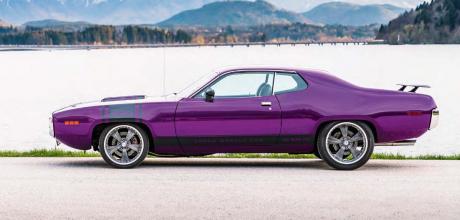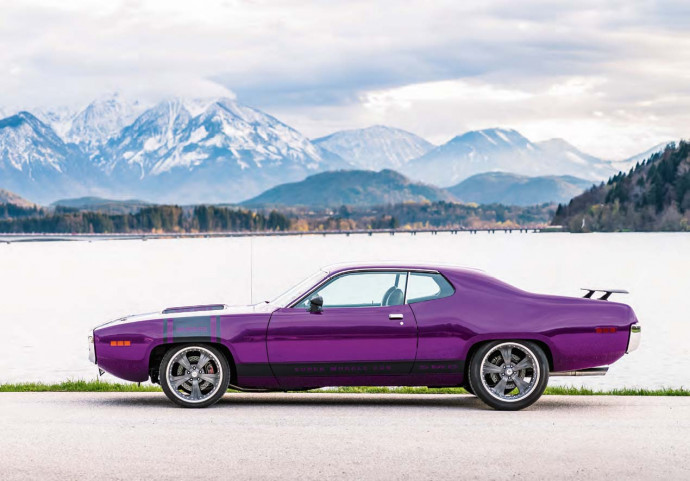1971 Plymouth GTX
Visually impressive, angular, carved out of a single piece of iron, long and large: The Plymouth GTX remains a presence that turns heads to this day.
Words: Marion Kattler-Vetter
Photos: Daniel Murgg
Need for Speed
Michael Sicher and his '71 Plymouth GTX

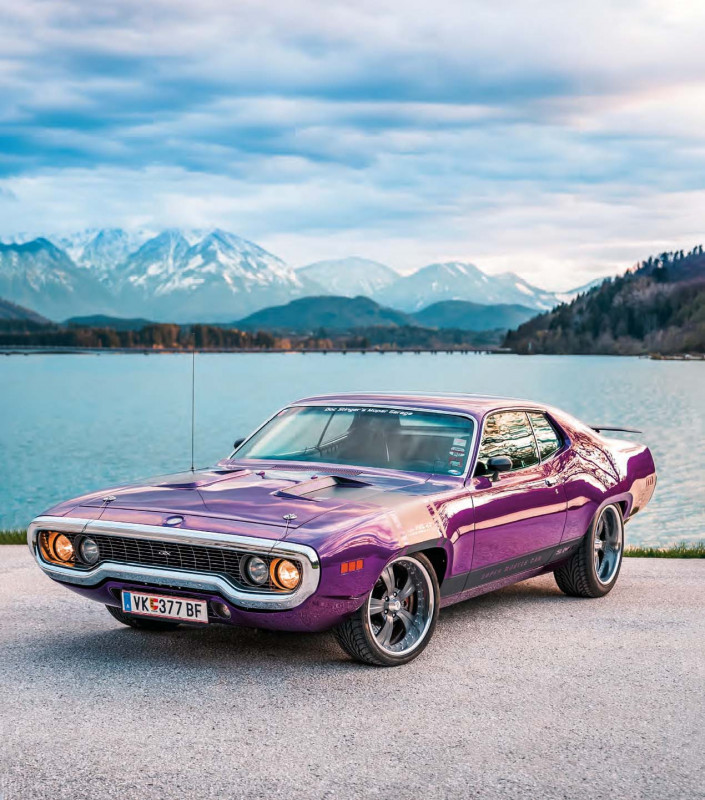
In 1965, three corporations dominated the American market. GM with just under 60% market share, Ford with 30%, and Chrysler with 8%. It was the era of full-size cars, huge road cruisers with ample displacement and horsepower, when John DeLorean, the engineering and later division chief of Pontiac, had an idea. Why not put a big engine in a small midsize car? The idea took off, and Plymouth GTX, Pontiac GTO, and Ford Mustang Cobra Jet were sent into the muscle car wars of the sixties.

The Chrysler came as a sport version of the Belvedere, labeled as Belvedere GTX, with scoops on the hood, a chrome fuel filler cap, decorative stripes, sports suspension, reinforced transmission, and a standard 7.2-liter V8 engine producing 375 horsepower. For an additional cost, the seven-liter Hemi V8, officially rated at 425 horsepower, could be ordered for just under $700 extra. For the 1968 model year, the Belvedere was completely redesigned and became simply the Plymouth GTX. In 1969, only minor cosmetic changes were made, the convertible was dropped, and in addition to the two well-known engines, the 390-horsepower «440 Six-Pack» variant of the 7.2-liter engine with three double-barrel carburetors was introduced.

By the end of 1970, the Belvedere was replaced by the Plymouth Satellite, and the GTX was now based on the new model — but only for one more year. The new feature was the coupe body, while the technology remained unchanged. The 7.2-liter engine was still available in two power levels, as was the seven-liter Hemi V8. Due to significantly declining sales figures, the GTX was removed from the lineup as a standalone model in the fall of 1971, so Plymouth produced the model over three short generations in a five-year production period that ended with a redesign for the 1971 model year. With a shorter wheelbase of 115 inches, the GTX was only offered as a hardtop coupe in the modern «Fuselage» styling, which was all the rage at the time. The rarest among them are those equipped with the 426 Hemi V8 and the 4-speed manual transmission. Out of the 30 Hemi-powered GTX built, only 11 were equipped with the manual transmission — it's no wonder that it is a highly sought-after classic.
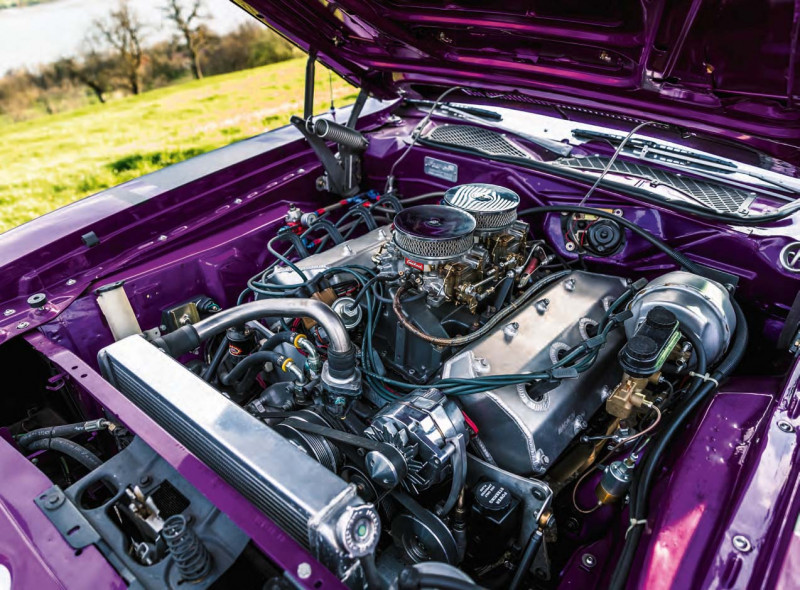
360 horsepower and 651 Nm are performance figures that were only achievable in Europe in this millennium. However, in cars that tend to weigh half a ton more. Also, it should be noted that the power was given in SAE horsepower but lower than the actual rating to satisfy insurance requirements.
New life for the GTX: «Wrecks to Riches» gave it a chance
When Michael first encountered the GTX in faraway Austria, it was the star of the US television series «Wrecks to Riches,» which is also shown on D-Max. Barry White, owner of the eponymous speed shop in California, hot rod guru, and unrelated to the heavyweight crooner, demonstrated through the Plymouth what his company is capable of. But «star» may not fully describe it: The '71 GTX was in a more than deplorable condition.
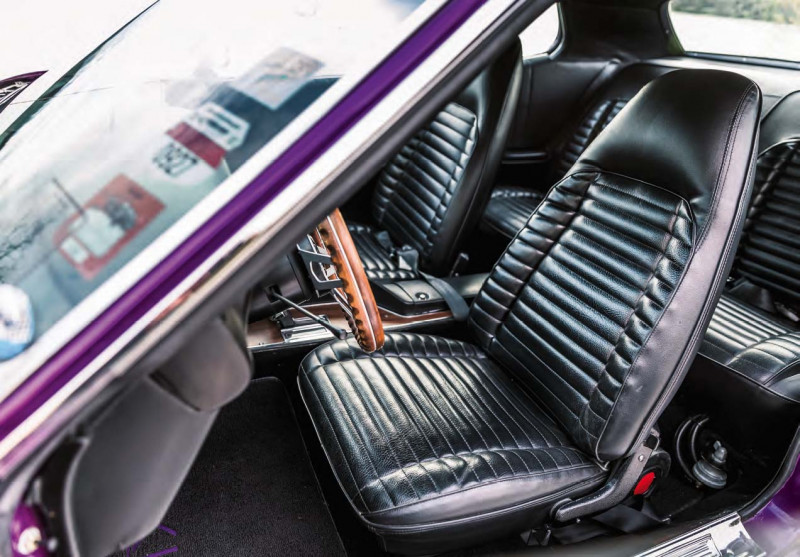
Completely wrecked, corroded body panels, the interior in tatters, the components covered in a thick layer of dirt, oil, and grime — however, Barry recognized the true value of this rare muscle car, brought the wreck into his workshop, and made a daring deal: Within four weeks, the GTX was to be auctioned in show condition. A man of his word.
Barry and his crew stripped, rustproofed, replaced parts, fabricated what couldn't be found, overhauled the Hemi, the transmission, and optimized the performance.
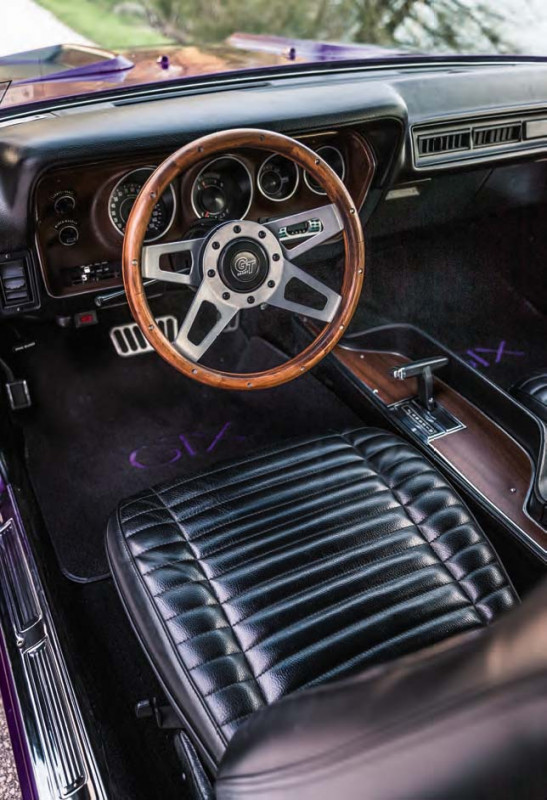
All original, of course. The plan worked: After four weeks of hard work, the GTX looked immaculate and found a happy buyer, staying true to the motto: Money is meant to fulfill dreams.
Michael, in beautiful Carinthia, was deeply impressed and somehow fell in love with the plum-crazy painted Chrysler. «Love at first sight,» he smiles, but it took a few more years before man and machine came together, and Michael lost sight of the muscle car. As an innkeeper and organic farmer, he had enough on his plate...literally. But then, in 2009, the purple beauty suddenly popped up on an online auction portal. Our man wasted no time: He called the seller, sealed the deal, and bringing the muscle car to Austria was almost a smooth gesture.
Anxious waiting, quiet doubts about whether it was a reasonable move, and finally, relief: The GTX stood at the door, still in top condition, the Hemi shaking the entire car, and the throaty sound of the widely audible muscle causing goosebumps. Even less car-savvy contemporaries have wide eyes: 651 Nm. Six hundred fifty-one!
Although Michael may have acted more on emotions than reason at first glance on the internet, he didn't want to leave anything to chance with the GTX. He brought the car to Styria to Doc Stinger, the Mopar expert who knows all the muscles inside and out. The master's verdict: Clean machine, not much needs to be done, the guys at Barry White's shop did an excellent job. Nevertheless, a few things were still addressed.
Michael wanted to operate the original shifter instead of the installed wireless automatic. And looking at the chromed gear lever, it's clear that he made the right choice. The fuel injection also had to make way for two double-barrel carburetors, but that was pretty much it. «Sure, you can still do a lot,» says Michael, «but you don't have to.» Now the power and torque monster awaits sightseeing tours in the Alpine country, which are sparse due to the limited time of the busy restaurant owner.
Since Michael produces many things for his guests' tables on his organic farm, leisure time is limited. Therefore, he appreciates the manageable kilometers he gets to enjoy with the purple beauty, as he doesn't accumulate more than 300 kilometers a year. But that's okay. Michael knows what he has, cherishes another Hemi muscle in his possession, and daily drives around in his '95 Impala or the '85 MB 500 — also not bad.
He isn't bothered by the lack of time for extensive journeys. He takes pleasure in his treasures in the garage and doesn't need to unleash them daily to have fun. The true connoisseur remains silent and enjoys, and the attention the GTX attracts is enough to fuel his passion...
TECHNICAL DATA 1971 Plymouth GTX
- Year of Manufacture: 1971
- Engine: V8 Hemi
- Displacement: 7,206 cc
- Max Power: 280 kW (360 hp)
- Max Torque: 651 Nm
- Transmission: 3-speed Automatic
- Drive: Rear-wheel drive
- Measurements L/W/H in mm: 4,743/1,899/1


